Oozing Pumpkin Elephant's Toothpaste
As seen on the Ellen DeGeneres Show! The classic Elephant's Toothpaste experiment takes on a whole new twist when you see it oozing from the […]
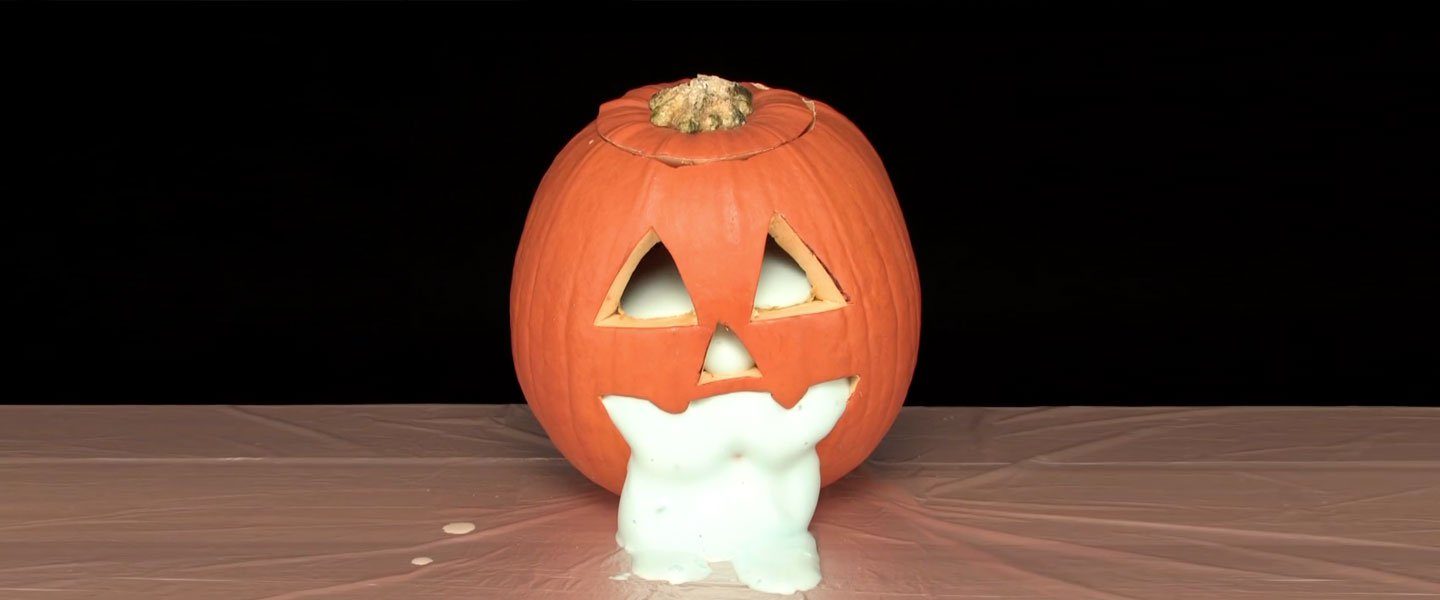
Here’s a new take on our kid-friendly “Elephant’s Toothpaste” demonstration that fits right in with your Halloween party plans. With a few simple materials right from your home, you make an awesome foaming ooze that seeps from every opening in the the face of your jack o’ lantern. It’ll bring squeals of excitement and looks of disgust from the faces of your party goers. It’s the benefits of science!
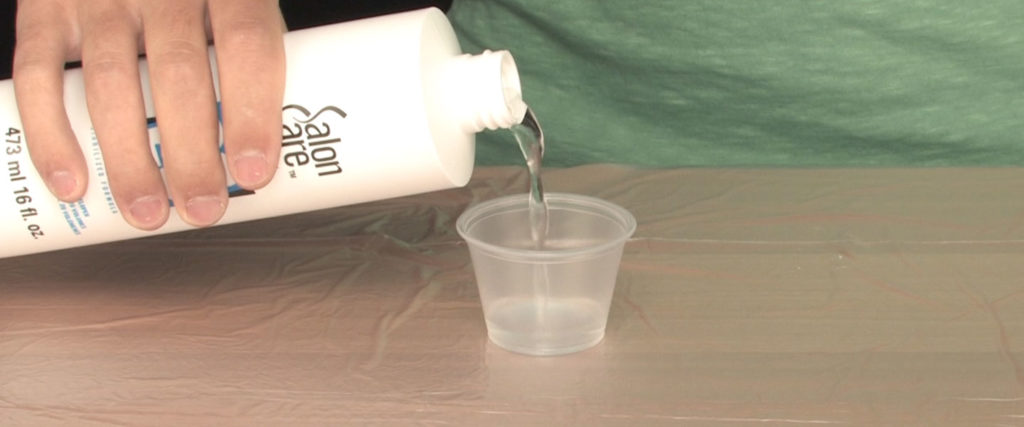
Cover your lab space with the plastic bag. (This makes it easier to clean up your space when you’re finished.) Fill a small cup with about 2 T (30 ml) of 12% hydrogen peroxide. NOTE: This cup needs to be small enough to fit inside your carved pumpkin. Cut out some of the pumpkin flesh under the lid if you need more space. Also, make sure there’s a flat spot on the floor of the pumpkin so the cup is stable.
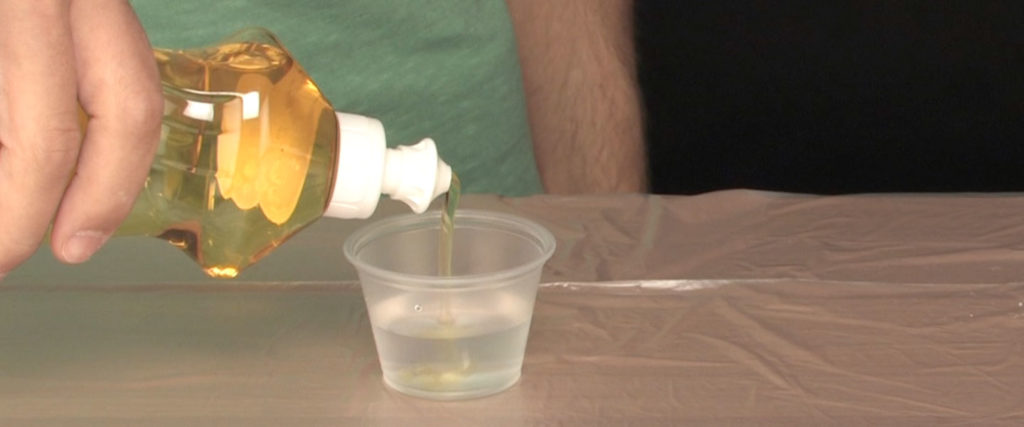
Add a squirt of dish soap to the hydrogen peroxide.
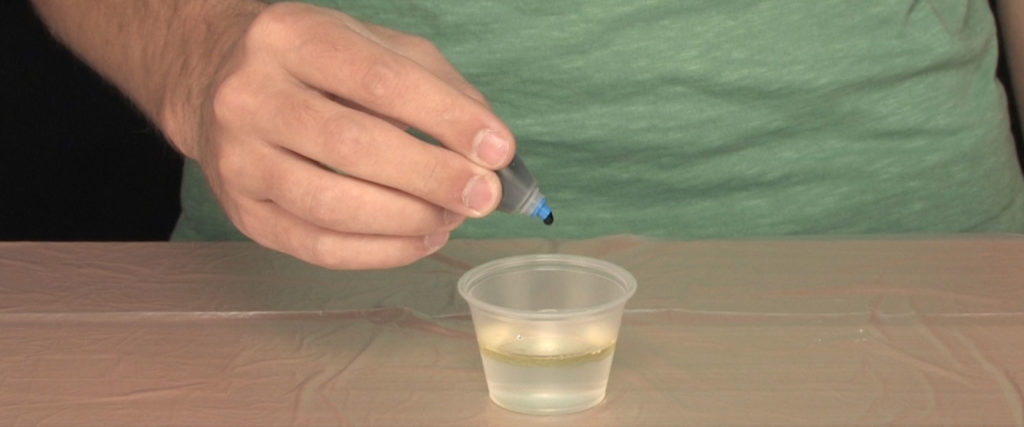
Add some some food coloring to give your foaming pumpkin a nice effect. Give the solution a stir with the spoon.
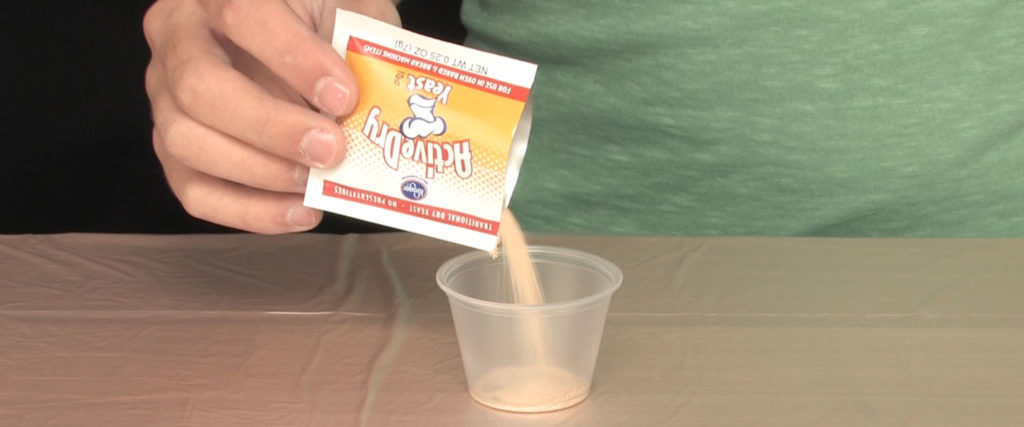
Dump the yeast into the other cup. Use all of it.
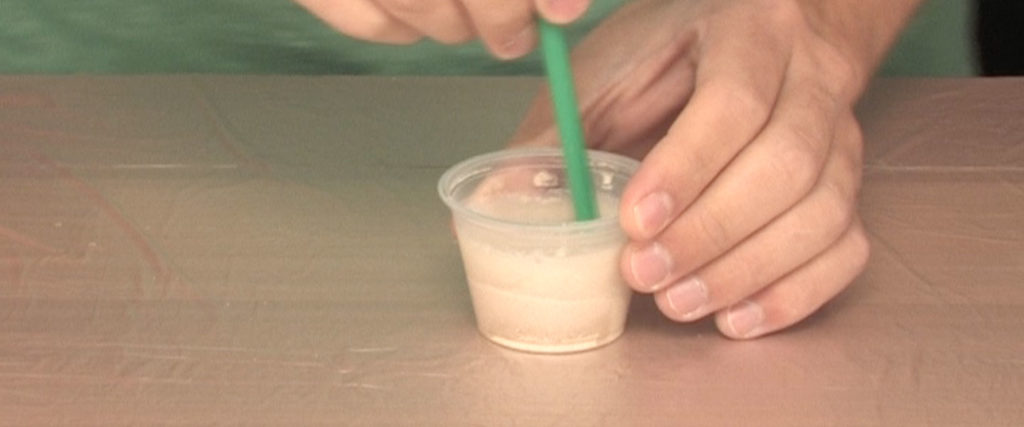
Add 4 T (59 ml) of very warm water to the yeast and stir it completely. If the mixture is too thick, like a goo, add a little more warm water to thin it. The yeast needs to pour quickly so you want it runny.
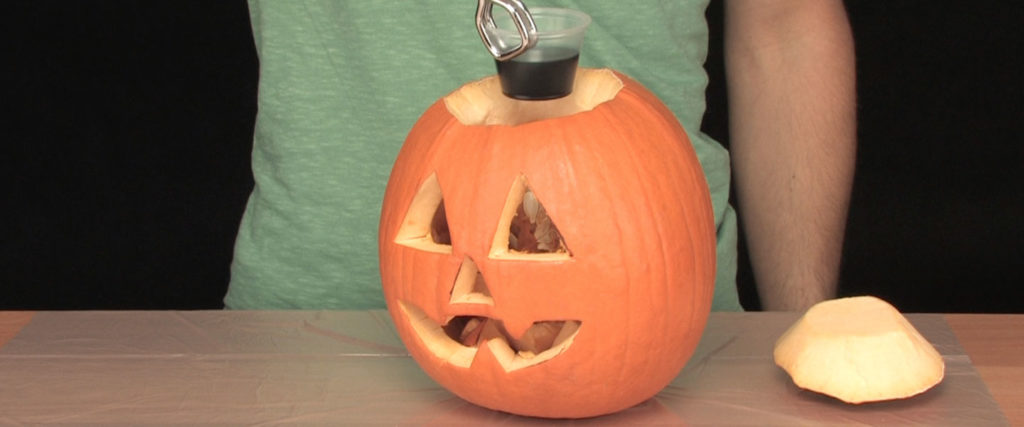
Open your jack o’ lantern and carefully lower the hydrogen peroxide solution into the pumpkin. Don’t tip it over or you’ll have to start over. Some kitchen tongs may be useful to do this Step.
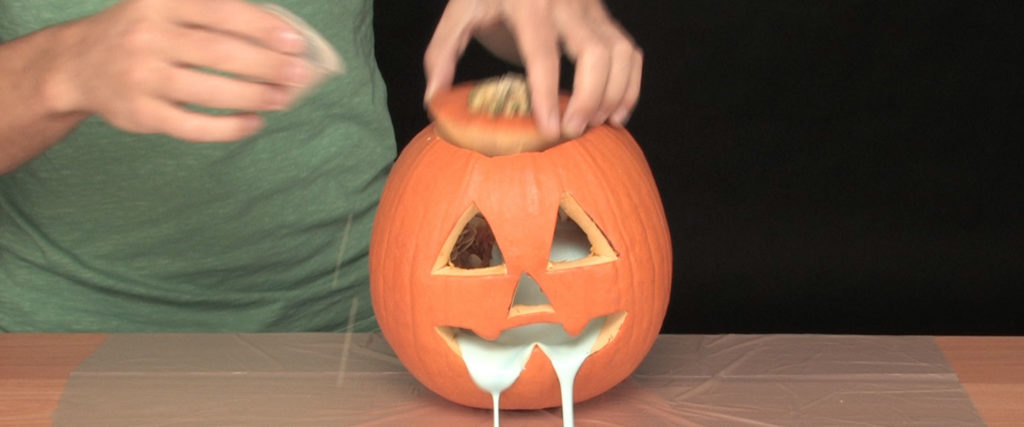
This is the moment of truth! When you start, quickly pour the yeast solution into the hydrogen peroxide and replace the top of your jack o’ lantern. It may take a few seconds, but once the reaction starts, the foaming, spooky result is well worth the wait.
You might remember treating a scraped knee or a cut with hydrogen peroxide. H2O2 is the chemical formula for hydrogen peroxide which shows it’s made up of two hydrogen atoms and two oxygen atoms. H2O2 looks like ordinary water (H2O), but the addition of that extra oxygen atom turns the molecule into an extremely powerful oxidizer. The hydrogen peroxide found at the grocery store is a 3% solution which is safe to touch but powerful enough to kill bacteria, viruses, and fungi on surfaces.
The hydrogen peroxide used for this demonstration is four times stronger than the over the counter variety you can buy at the store. Low percentage hydrogen peroxide (3%) is great at home but will not produce the massive amount of foam seen in the this effect.
The secret to this reaction is actually the catalyst – the yeast mixture – that speeds up the decomposition of the hydrogen peroxide. This catalyst releases the oxygen molecules that are contained in the hydrogen peroxide molecule. When H2O2decomposes, it breaks down to form water (H2O2) and oxygen (O2). The soap bubbles that erupt from the pumpkin are actually filled with oxygen.
As the reaction takes place, you’ll also see water vapor (yes, water vapor) rising out of the erupting foam. This shows that the reaction is exothermic, or that it gives off heat during the decomposition. As the bonds break between the H2O and O2, they release energy in the form of heat. Do the reaction in a cup and feel the sides of the cup. They’ll be warm!
CAUTION: Always be careful not to touch the foam with bare skin. Always wear safety glasses and protective gloves. Remember to cover your demo surface with a plastic drop cloth for easy clean-up. Everyone will want to touch the foam that gets made, but you must keep eager fingers away. This is just in case some of the hydrogen peroxide did not react completely with the catalyst. You don’t want anyone to get a hand burned or skin stained from touching the foam just after it’s made.
All of the “aftermath” from this reaction is safe to gather up in the plastic bag and either throw away in the trash can or wash down the drain.